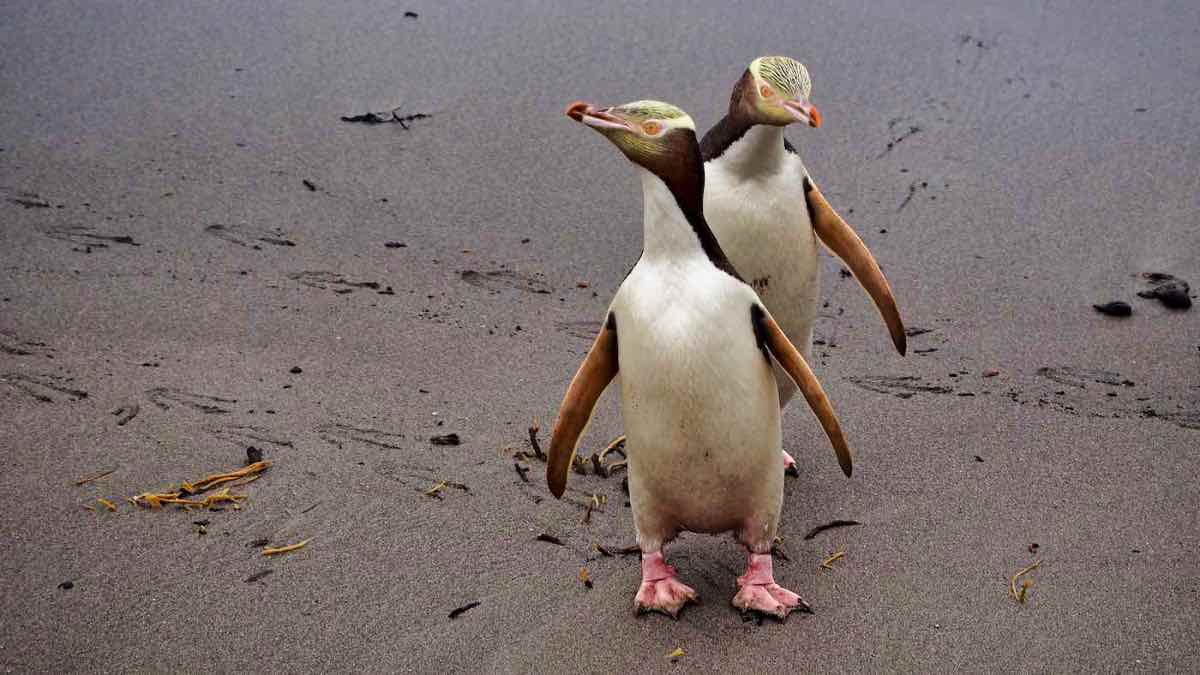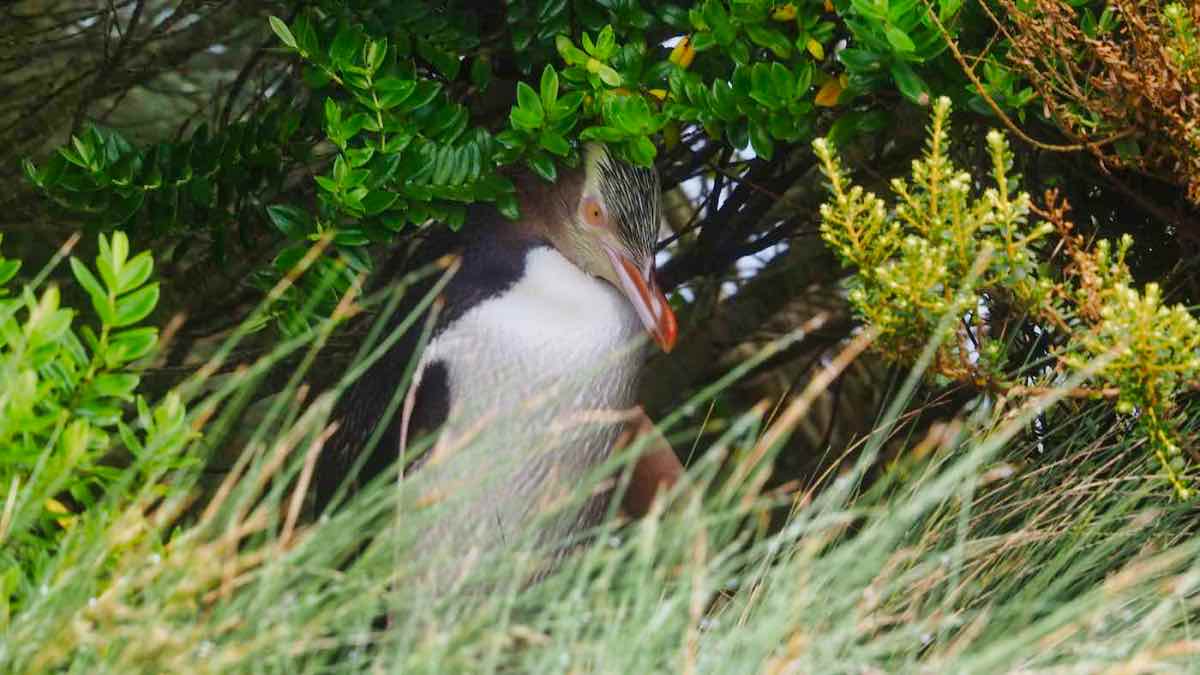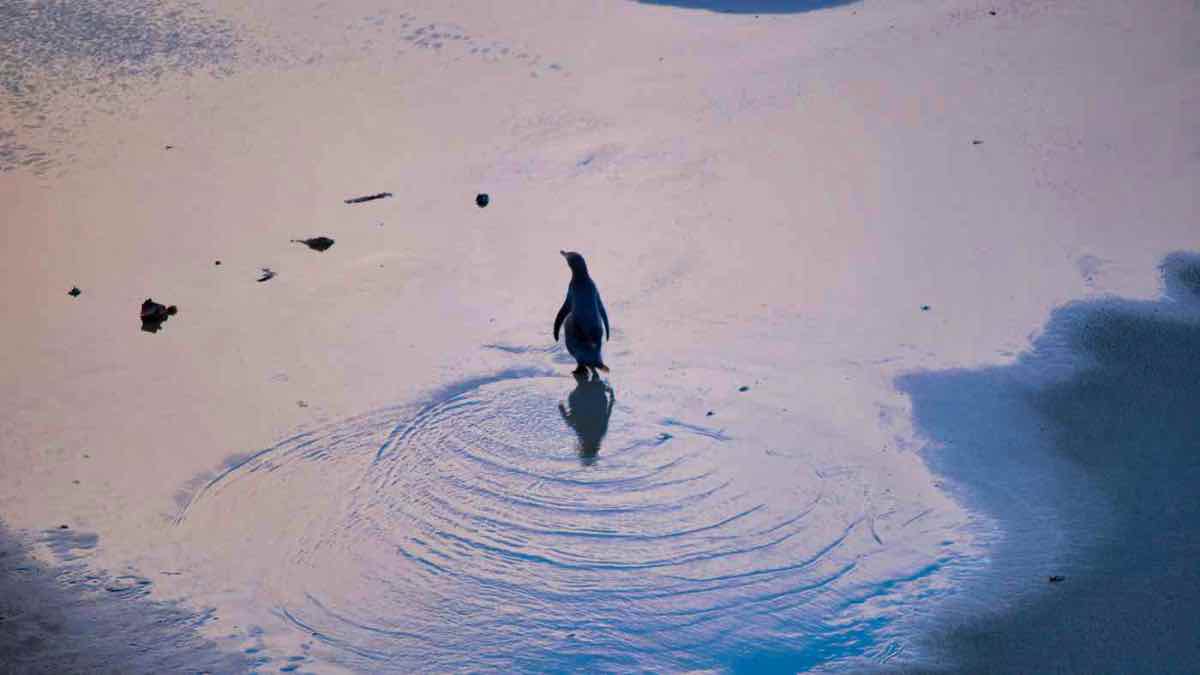Yellow-eyed Penguin
Scientific name: Megadyptes antipodes
Size: 5.7 kg (m), 5.4kg (f)
Nest type: under dense vegetation
Favourite food: fish and squid
The Yellow-eyed Penguin is often referred to as the rarest penguin in the world, although, unfortunately, there are others that could lay claim to that crown too: especially the Galapagos and Fiordland Penguins.
 Identification:
Identification:
Adults are unmistakable with their yellow eyes and yellow eye-stripes that join on the back of the head. Moulting birds and birds at sea can be confused with crested penguins. Immature birds are similar to adults but have a pale yellow chin and a less vivid yellow eye-stripe.
Habits:
They nest in dense vegetation in dunes and coastal forest, with nests typically being isolated from each other. At sea, Yellow-eyed Penguins forage in pairs or alone.
Distribution: map
Endemic to New Zealand, Yellow-eyed Penguins breed on the east and south coast of the South Island, on and around Stewart Island, the Auckland Islands, and Campbell Islands.
Migration and Vagrancy:
Resident. Adults can be found near the breeding colonies throughout the year. Juveniles disperse as far north as East Cape, North Island, but none have been recorded in Australia.
Breeding Season and Moult:
Yellow-eyed penguins have a very long chick-rearing period (100 days). Consequently, breeding takes from September to February. Moult occurs at the end of the breeding period.
Diet:
Yellow-eyed Penguins feed mainly on fish. Both, pelagic and demersal species are taken. Cephalopods are taken to a lesser extent, but may be more important for immatures and for adults in years when available fish stocks are limited.
Size: 5.7 kg (m), 5.4kg (f)
Nest type: under dense vegetation
Favourite food: fish and squid
The Yellow-eyed Penguin is often referred to as the rarest penguin in the world, although, unfortunately, there are others that could lay claim to that crown too: especially the Galapagos and Fiordland Penguins.

Adults are unmistakable with their yellow eyes and yellow eye-stripes that join on the back of the head. Moulting birds and birds at sea can be confused with crested penguins. Immature birds are similar to adults but have a pale yellow chin and a less vivid yellow eye-stripe.
Habits:
They nest in dense vegetation in dunes and coastal forest, with nests typically being isolated from each other. At sea, Yellow-eyed Penguins forage in pairs or alone.
Distribution: map
Endemic to New Zealand, Yellow-eyed Penguins breed on the east and south coast of the South Island, on and around Stewart Island, the Auckland Islands, and Campbell Islands.
Migration and Vagrancy:
Resident. Adults can be found near the breeding colonies throughout the year. Juveniles disperse as far north as East Cape, North Island, but none have been recorded in Australia.
Breeding Season and Moult:
Yellow-eyed penguins have a very long chick-rearing period (100 days). Consequently, breeding takes from September to February. Moult occurs at the end of the breeding period.
Diet:
Yellow-eyed Penguins feed mainly on fish. Both, pelagic and demersal species are taken. Cephalopods are taken to a lesser extent, but may be more important for immatures and for adults in years when available fish stocks are limited.




